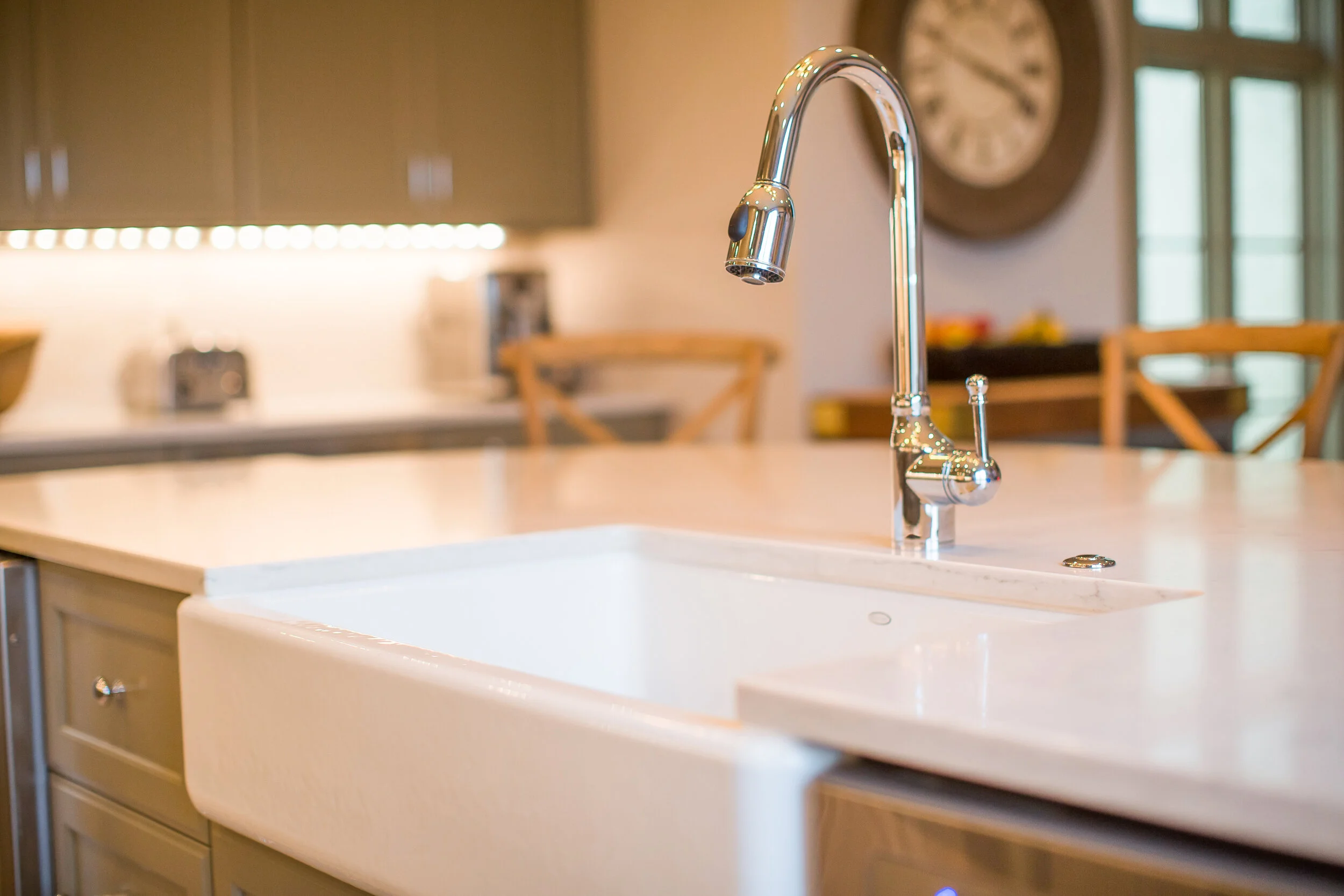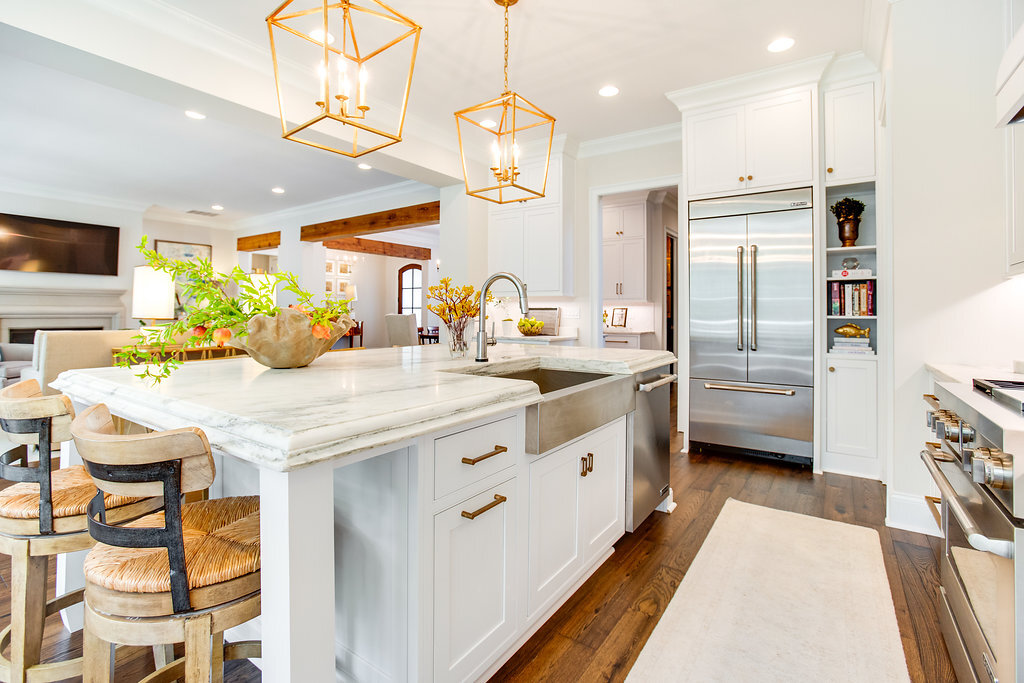Kitchen Sink Materials – The Pros and Cons
Learn About 6 of the Most Durable Kitchen Sink Materials
Today, homeowners have more choices for exciting kitchen sink materials than ever before! From natural stone to enameled cast iron, to hammered copper, the diversity of materials available is amazing.
A kitchen remodeling consists of dozens of decisions about everything from countertops, and lighting, to flooring and paint colors. It's easy to see how you can get confused about finding the right material for your new kitchen sink. Understanding your options can help you make the best choice to fit your lifestyle and aesthetic needs.
Kitchen sinks take a lot of abuse, from dropped pots to hot pans and liquids to foods that can stain. You want your kitchen sink to look beautiful, and you want the beauty in a material that is durable enough to last for years. Comparing the options available can help you choose the most durable sink that also fits your personal aesthetic. Many options available hold up well and are affordable and durable.
What follows are the pros and cons of the top choices for kitchen sink materials.
The Most Popular Kitchen Sink Materials
Whether you're a first-time sink shopper or a grizzled professional, the vast assortment of materials can make buying the right sink more challenging than it needs to be. Different materials have different needs in terms of daily cleaning and maintenance.
Think about your lifestyle and decide if you're looking for a low maintenance sink, or if having that show-stopping kitchen is worth the extra effort. Every material offers something different in terms of style and design. Some are striking and unique, like copper, and others provide a more familiar look like stainless steel.
Here are the pros and cons of some of the most popular kitchen sink materials to help you decide which is right for your kitchen.
Learn the cost of a kitchen remodel
Copper
Copper is one of the most unique sink materials available. It offers a striking color, and an ever-changing patina offers homeowners a look and style that really stands out. Copper is not difficult to clean and care for. In fact, copper only needs a daily rinse with mild soap.
Copper is also naturally antimicrobial, which is excellent for food prep and dishwashing. Like stainless steel, copper comes in different gauges or thicknesses. 14 to 18 gauge offers the best durability, but thicker sinks are more dent resistant. Look for a sink that is at least 99 percent pure copper; some may include zinc to improve the strength.
On the downside, copper can react to acids and cleaners. Those chemicals can damage the patina. Copper is also on the high end of the price range.
Stainless Steel
Stainless steel sinks are the most popular choice for many homeowners. According to Franke, the leading sink manufacturer, 70% of all sinks are made using stainless steel. Compared to other materials, stainless steel is inexpensive, although designer brands like Kohler and Blanco can be pricey.
Stainless steel is also classified in terms of gauge—the lower the gauge, the heavier the steel. Most sinks fall within the 15 to 24 gauge range, and most residential sinks are between 18 and 22.
Stainless steel only has a few cons. Stainless steel tends to be noisier than other materials. Although many have a spray coating to reduce noise. Overall stainless steel is a really durable material. However, it can scratch easier than many materials. Stainless sinks also tend to show water spots, and it can be challenging to keep them immaculately clean.
Enameled Cast Iron
Cast iron is a durable and strong material, but it tends to rust when exposed to moisture. When using cast iron as a sink, it is coated with porcelain enamel. This gives the sink a smooth glossy finish and comes in a wide range of colors. Enamel resists staining and is easy to clean.
Enameled cast iron has a few drawbacks. It is heavy, and you may need to reinforce your countertops and cabinets to safely support the weight. While it's also very durable, it is also susceptible to chipping or scratching if you drop something heavy into the sink. You need to also be careful when cleaning.
If you use abrasive or acidic cleaners, if the chip is deep and exposes cast iron, your sink will rust. The good news, it's easy to refinish the sink if you do have a problem.
Fireclay
Fireclay is relatively new to the sink market. This ultra-durable material is made of a mix of clay and minerals, then fired at high temperatures and coated in a unique glaze giving it a look similar to enameled cast iron. Fireclay kitchen sinks are often seen in farmhouse style with an exposed apron. While they are available in other colors, you most often see them in white or off-white.
Fireclay resists stains, scratches, and acids. It won't rust, but one drawback is that it can crack due to vibrations, so it's not ideal if you have a garbage disposal. It's also very heavy and may need reinforcement to support its weight.
Granite or Quartz
Solid stone sinks come in at the high end of the price range, but they are absolutely beautiful and make a real statement in the kitchen. Choosing the same species of stone as your countertops can give you a seamless look. Stone is durable and holds up well against scratches, stains, and similar damage.
That being said, the stone is porous and will require regular sealing. Granite, marble, quartz, or slate sinks are also heavy and may need you to reinforce cabinetry for safe installation. Darker colors may also show scratches or other damage more than lighter colors.
Stone Composite
If a solid stone sink is out of your price range, a composite option might be a better choice. These sinks are made with stone dust and resin to give you the look of stone at a much more affordable price point. Common materials include crushed granite, quartz, or marble mixed with resin.
Unlike natural stone, which often has a variegated look due to natural patterns in the stone, composite sinks have a consistent look and come in various color and style options. Composite sinks hold up well under heavy use. They resist staining and scratching, withstand acids, and don't show water spots. They are also non-porous, which means they never need sealing.
One drawback is that composite can crack or get damaged when exposed to extreme heat, like a hot pan placed in the sink.
These are the top six most popular sink materials available with homeowners and designers today. They come in a wide range of colors, styles, and price points. Your sink is a critical element in your kitchen that contributes to both its functionality and aesthetic beauty.
Your design-build professional can help you make the right decision.
If you live in the West Central Alabama area, and you're planning a kitchen remodeling project, give the design experts at Toulmin Kitchen & Bath a call at (205) 366-0807. Our design team can help educate you on all of the choices of materials available to you. Let us help you to create your dream kitchen to meet your needs now and into the future! Call today and arrange a free no-obligation consultation to discuss your project.


